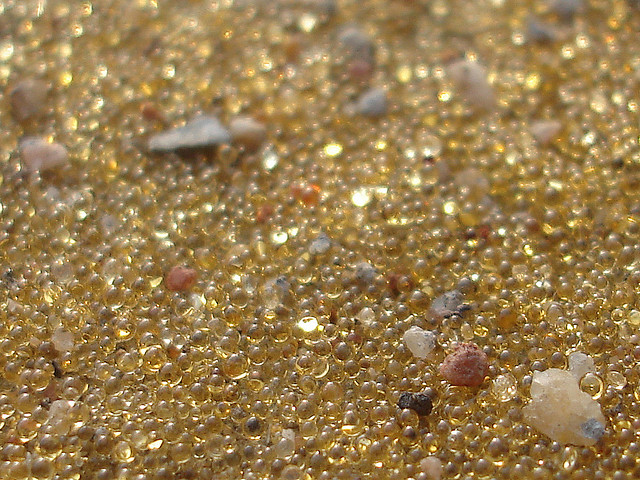FWP:
SETS == DOUBLE ACTIVATION
JALVAH: {7,4}
SCRIPT EFFECTS: {33,7}
SUN: {10,5}
ZARRAH: {15,12}
Ghalib loves to think about grains of sand and the way they glitter in the sun; for more on this see {16,4}. He imagines the lover's body as decomposed into dust, each grain of which glitters adoringly in the sunlight, capturing and returning the glowing rays of the radiant, coquettish presence (of the sun and/or the beloved).
Nazm calls attention to the multivalence of havaa . He cites its identity in spelling with the masculine singular perfect form of honaa ; this is made especially prominent by its placement almost directly after hu))e , the masculine plural perfect form of honaa . Thus one might well read it initially as hu))aa .But then, in view of the i.zaafat and the rest of the line, it becomes clear that the word is not hu))aa at all, but is the identically-spelled feminine noun havaa instead. Thus he calls it an iihaam , a special form of punning; it is also an enjoyable kind of wordplay.
But the feminine noun havaa itself is notably multivalent: it means both 'air, wind' and 'desire' (see the definition above, and {8,3}). The verse is so framed that both meanings are fully activated. The two Bekhuds prove the point: Bekhud Dihlavi reads 'desire' (the sand-grains sparkle), and Bekhud Mohani reads 'wind' (the sand-grains blow into the air).
The radiance/appearance of coquetry thus
keeps the dust of the dead lovers both glinting in the sun, and flying
restlessly through the air. In the beautiful {61,7}, the lover's dust becomes pure ardor that flies upward
and is blown in the wind,

Nazm:
There is an iihaam in the word havaa -- that is, the dust-grain is in the air ( havaa ); the past tense [of honaa] is hu))e. (67)
== Nazm page 67